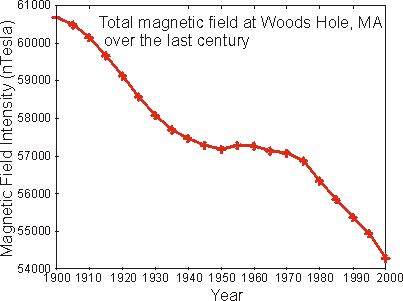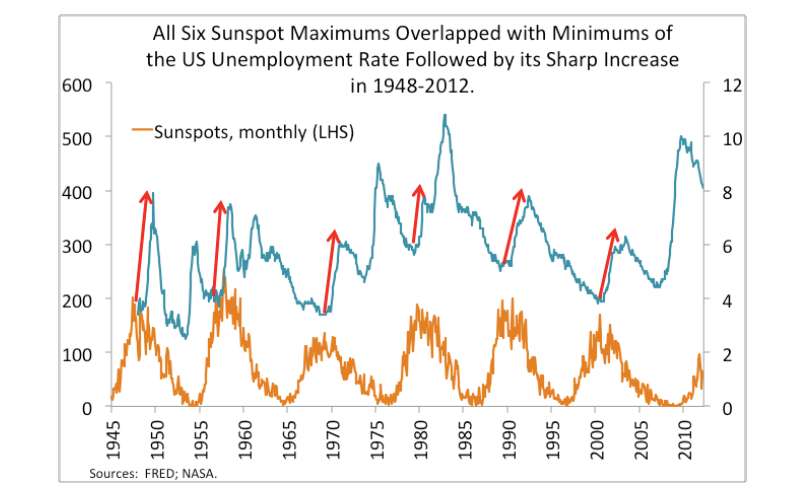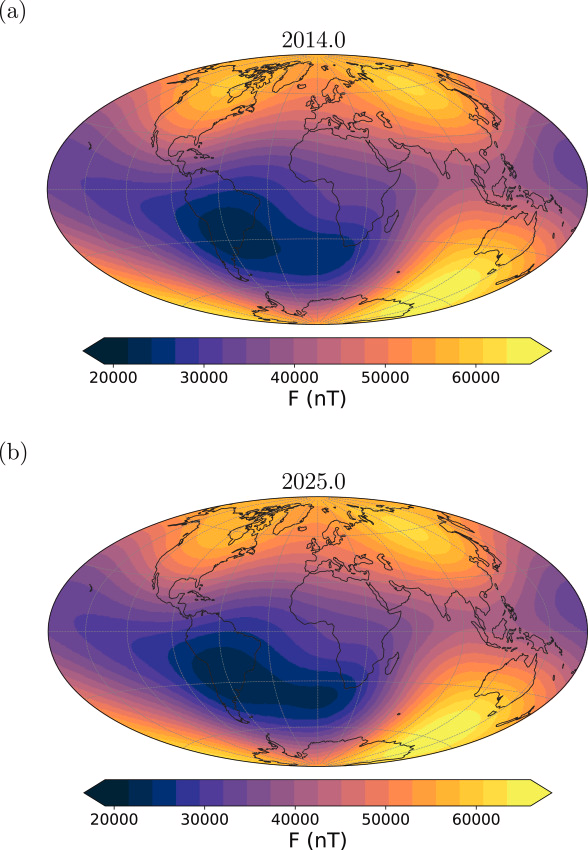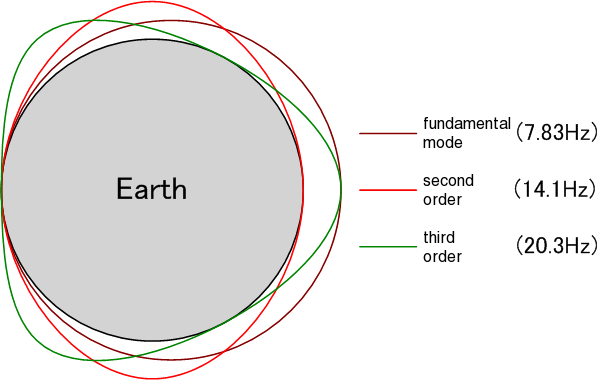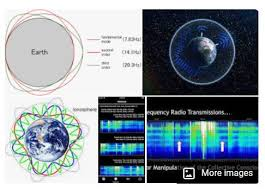How Airships could unlock a $650 billion dollar carbon-free long-distance freight market
The engineering scaling laws behind airships are incredibly compelling and could revolutionize transoceanic freight. But, they're unpopular for the wrong reasons.
Here's the econo-physics of our long-lost Zeppelin heritage:
Summary:
- Physics demands airships are big and cruise at moderate speeds of ~100km/hr
- Economics demands airships use hydrogen as lifting gas, target long-haul freight, fill a niche between ocean freighters and air freight in cost / speed.
- Airships using the jet-stream would be 4-5x faster than ocean freight and save 3,375 tons of CO2 on a round-the-trip journey
- Airship renaissance has already begun - both national governments and tech titans like Sergey Brin are developing new designs.
The Airship Cargo niche is providing freight at 1/2 to 1/4 the cost of air freight while 4-5x faster than ocean-going freighters, for far less CO2 impact.
~~ Physical Scaling Laws ~~
The cargo-lifting capacity of an airship scales with its volume, the drag scales with the frontal cross-sectional area. This means bigger is better - the larger the airship, the more efficient it is at carrying cargo.
The drag force is proportional to velocity squared at typical airship speeds, and since power = force * velocity, the power-plant requirement depends on the velocity cubed - limiting the realistic speeds for airship freight.
For every doubling in size, you 8x the cargo carrying capacity and only 4x the drag. So, big is better, slow is better.
Net net: Optimized airship cargo haulers will be massive and travel at moderate speeds ~100km/hr
Take for example a 500-ton cargo airship design study (). Here are the specs:
Length: 388 meters
Diameter: 78 meters
Volume, 1,130,000 cubic meters
Gross weight: 1,000,000 kilograms
Cruise shaft power: 3.4 megawatts
This is almost as long as the largest freighter in the world. An appropriate gondola would be the airbus A380, the current-largest airplane in the world.
Adding 60% in payload only increases the length by 15%, netting a 21% improvement in efficiency in fuel.
For intuition, both ocean freighters and airships are displacement vehicles - they carry cargo by displacing a fluid, which provides buoyancy. Water is about 1000 times denser than air, therefore for a given size, an ocean-going freighter can carry about 1000x the freight of an airship. Airships, however, travel about 3x faster.
~~ Economics of Freight ~~
Airships get more cost-efficient the larger they get - but they have to compete with existing freight options. Here's the three most popular forms of freight, priced by what it takes to move one ton a distance of one kilometer domestically:
Air freight: 83 cents / ton-km
Trucking : 11 cents / ton-km
Ocean freight: 2 cents / ton-km
Within the US Trucks haul the vast majority of freight and generate the majority of cargo revenue - they are in the goldilocks zone of time and cost.
Internationally, prices for air and ocean freight are about half (~40 cents and 1 cents per ton-km), and the split is more even in terms of revenue.
Trucks exist in the 'goldilocks zone' of freight - it takes a couple days, isn't bound to a port or airport, and is medium-cost. Airships would be the trucks of international long-distance freight - medium speed, medium cost, not rely on ports - and could capture a massive part of the market:
If airships captured half of the 13-trillion ton-kms currently served by container ships at 10-cents per ton-km, thats $650 billion in annual revenue.
If you assume each airship carries 500 tons, cruises at 90 km/hr, and is used 2/3rds of the time, you need a fleet of 25,000 airships to the 6.5 trillion ton-kms of annual freight. Thats about the same number of airliners in operation today.
~~ The Case for Hydrogen ~~
It's currently illegal to use hydrogen as a lifting gas for aviation in the United States. Why? The Hindenburg. However, hydrogen is less dense than helium and so provides 8% more gross lift - it's also about 70x cheaper.
Helium is relatively expensive and in scarce supply, and has a wildly fluctuating price. MRI machines consume about half of helium production worldwide. Hydrogen, on the other hand, is cheap and abundant.
500-ton airship filling cost:
Helium: $8 million USD
Hydrogen: $100 thousand USD
Global helium production is only 160 million cubic meters per year - enough for 140 of our 500-ton cargo airships.
An advantage of using hydrogen as your lifting gas is that it can also be used as your propulsion fuel. Since the airship is gigantic and can ride above most weather, tiling the exterior surface in solar panels can also provide on-ship power to separate hydrogen from moisture collecting from the atmosphere - unlimited mid-air refueling.
~~ Airship Unit Economics ~~
Assume we now have 500-ton cargo airships that can do 260 million ton-km/year, at 10 cents/ton-km, for an annual revenue of $26 million / airship. The fuel cost would be around $4 million, leaving $22 million/year for other costs like support, maintenance, and profit.
A trade-study on a much smaller capacity airship of 125 tons suggests annual fixed costs of ~$15m per year and variable costs of $7.5m per year - eating up our $22m budget on a smaller ship [2]. But, size is our friend - go bigger until you hit profitability.
If a 500-ton cargo airship could be manufactured for ~$100 million, it starts to get feasible. If you can charge more than 10-cents per ton-km, perhaps 20-cents per ton-km - suddenly you've hit airship profitability.
~~ Wind-Hacking ~~
The fuel costs for a 125-ton airship could well be over $6m per year [2] (and via scaling law of mass^2/3, net $15m per year for our 500-ton airship). This is a substantial fraction of our freight revenue, it'll be a lot cheaper and a lot easier if your massive airships can just ride the natural wind currents in the Earth's atmosphere.
There are two counter-rotating jet streams high in the atmosphere, created via convection currents and the Earth's rotation. They exist at altitudes of around 10km and maintain average wind-speeds of 135 km/hr.
Scientists have analyzed the jet stream for airship travel and the numbers are compelling [3]. Airships in the jet stream could circumnavigate the world in ~13 days - currently it takes ocean-going freighters 40 - 50 days to achieve the same. Freighters also burn about 225 tons of bunker fuel per day.
Airships could circumnavigate the planet 4-5x faster than ocean-going freighters while saving 1,1250 tons of bunker oil from being burned.
~~ Zeppelin Competitive Landscape ~~
There's currently a few projects that recognize the inherently appealing physics and economics of airships.
- LTA research in California backed by Sergey Bring and is developing the 400-ft long Pathfinder 1
- Flying Whales, supported by both Canadian and French governments, is testing a 650-foot long LCA60T dirgible.
- Hybrid Air Vehicle in the UK is readying production of its Airland 10 blimp, with 10 tons of cargo capacity,
These projects use materials like kevlar, carbon fiber, and new alloys that are lighter and more performant and our ability to safely use hydrogen and detect leaks is far beyond what was available in the days of the Zeppelin. Faster, better, stronger.
They just need to be 50x bigger.
~~ The Market for Zeppelin Cruises ~~
A 2nd-order win in developing airships for cargo is to re-learn our airship manufacturing and deployment capabilities.
I dream of a day we can book cruise tickets on an airship that takes a 2 week tour of the Andes, or Rockies, or Grand Canyon - to float high above the Mongolian Steppes, to see the curvature of the Earth at sunrise before stopping off at a remote Wadi in the Sahara for lunch.
Airships would unlock a zero-impact means of exploring remote areas of the Earth from a unique high vantage point. Unfettered by roads, ports, tourists could see remote wilderness sanctuaries without ever stepping foot in them.
~~ Further reading ~~
[1]
[2]
[3]
@elidourado's blog post is excellent reading on this topic and I suggest giving him a follow for more atoms-first optimism.




The engineering scaling laws behind airships are incredibly compelling and could revolutionize transoceanic freight. But, they're unpopular for the wrong reasons.
Here's the econo-physics of our long-lost Zeppelin heritage:
Summary:
- Physics demands airships are big and cruise at moderate speeds of ~100km/hr
- Economics demands airships use hydrogen as lifting gas, target long-haul freight, fill a niche between ocean freighters and air freight in cost / speed.
- Airships using the jet-stream would be 4-5x faster than ocean freight and save 3,375 tons of CO2 on a round-the-trip journey
- Airship renaissance has already begun - both national governments and tech titans like Sergey Brin are developing new designs.
The Airship Cargo niche is providing freight at 1/2 to 1/4 the cost of air freight while 4-5x faster than ocean-going freighters, for far less CO2 impact.
~~ Physical Scaling Laws ~~
The cargo-lifting capacity of an airship scales with its volume, the drag scales with the frontal cross-sectional area. This means bigger is better - the larger the airship, the more efficient it is at carrying cargo.
The drag force is proportional to velocity squared at typical airship speeds, and since power = force * velocity, the power-plant requirement depends on the velocity cubed - limiting the realistic speeds for airship freight.
For every doubling in size, you 8x the cargo carrying capacity and only 4x the drag. So, big is better, slow is better.
Net net: Optimized airship cargo haulers will be massive and travel at moderate speeds ~100km/hr
Take for example a 500-ton cargo airship design study (). Here are the specs:
Length: 388 meters
Diameter: 78 meters
Volume, 1,130,000 cubic meters
Gross weight: 1,000,000 kilograms
Cruise shaft power: 3.4 megawatts
This is almost as long as the largest freighter in the world. An appropriate gondola would be the airbus A380, the current-largest airplane in the world.
Adding 60% in payload only increases the length by 15%, netting a 21% improvement in efficiency in fuel.
For intuition, both ocean freighters and airships are displacement vehicles - they carry cargo by displacing a fluid, which provides buoyancy. Water is about 1000 times denser than air, therefore for a given size, an ocean-going freighter can carry about 1000x the freight of an airship. Airships, however, travel about 3x faster.
~~ Economics of Freight ~~
Airships get more cost-efficient the larger they get - but they have to compete with existing freight options. Here's the three most popular forms of freight, priced by what it takes to move one ton a distance of one kilometer domestically:
Air freight: 83 cents / ton-km
Trucking : 11 cents / ton-km
Ocean freight: 2 cents / ton-km
Within the US Trucks haul the vast majority of freight and generate the majority of cargo revenue - they are in the goldilocks zone of time and cost.
Internationally, prices for air and ocean freight are about half (~40 cents and 1 cents per ton-km), and the split is more even in terms of revenue.
Trucks exist in the 'goldilocks zone' of freight - it takes a couple days, isn't bound to a port or airport, and is medium-cost. Airships would be the trucks of international long-distance freight - medium speed, medium cost, not rely on ports - and could capture a massive part of the market:
If airships captured half of the 13-trillion ton-kms currently served by container ships at 10-cents per ton-km, thats $650 billion in annual revenue.
If you assume each airship carries 500 tons, cruises at 90 km/hr, and is used 2/3rds of the time, you need a fleet of 25,000 airships to the 6.5 trillion ton-kms of annual freight. Thats about the same number of airliners in operation today.
~~ The Case for Hydrogen ~~
It's currently illegal to use hydrogen as a lifting gas for aviation in the United States. Why? The Hindenburg. However, hydrogen is less dense than helium and so provides 8% more gross lift - it's also about 70x cheaper.
Helium is relatively expensive and in scarce supply, and has a wildly fluctuating price. MRI machines consume about half of helium production worldwide. Hydrogen, on the other hand, is cheap and abundant.
500-ton airship filling cost:
Helium: $8 million USD
Hydrogen: $100 thousand USD
Global helium production is only 160 million cubic meters per year - enough for 140 of our 500-ton cargo airships.
An advantage of using hydrogen as your lifting gas is that it can also be used as your propulsion fuel. Since the airship is gigantic and can ride above most weather, tiling the exterior surface in solar panels can also provide on-ship power to separate hydrogen from moisture collecting from the atmosphere - unlimited mid-air refueling.
~~ Airship Unit Economics ~~
Assume we now have 500-ton cargo airships that can do 260 million ton-km/year, at 10 cents/ton-km, for an annual revenue of $26 million / airship. The fuel cost would be around $4 million, leaving $22 million/year for other costs like support, maintenance, and profit.
A trade-study on a much smaller capacity airship of 125 tons suggests annual fixed costs of ~$15m per year and variable costs of $7.5m per year - eating up our $22m budget on a smaller ship [2]. But, size is our friend - go bigger until you hit profitability.
If a 500-ton cargo airship could be manufactured for ~$100 million, it starts to get feasible. If you can charge more than 10-cents per ton-km, perhaps 20-cents per ton-km - suddenly you've hit airship profitability.
~~ Wind-Hacking ~~
The fuel costs for a 125-ton airship could well be over $6m per year [2] (and via scaling law of mass^2/3, net $15m per year for our 500-ton airship). This is a substantial fraction of our freight revenue, it'll be a lot cheaper and a lot easier if your massive airships can just ride the natural wind currents in the Earth's atmosphere.
There are two counter-rotating jet streams high in the atmosphere, created via convection currents and the Earth's rotation. They exist at altitudes of around 10km and maintain average wind-speeds of 135 km/hr.
Scientists have analyzed the jet stream for airship travel and the numbers are compelling [3]. Airships in the jet stream could circumnavigate the world in ~13 days - currently it takes ocean-going freighters 40 - 50 days to achieve the same. Freighters also burn about 225 tons of bunker fuel per day.
Airships could circumnavigate the planet 4-5x faster than ocean-going freighters while saving 1,1250 tons of bunker oil from being burned.
~~ Zeppelin Competitive Landscape ~~
There's currently a few projects that recognize the inherently appealing physics and economics of airships.
- LTA research in California backed by Sergey Bring and is developing the 400-ft long Pathfinder 1
- Flying Whales, supported by both Canadian and French governments, is testing a 650-foot long LCA60T dirgible.
- Hybrid Air Vehicle in the UK is readying production of its Airland 10 blimp, with 10 tons of cargo capacity,
These projects use materials like kevlar, carbon fiber, and new alloys that are lighter and more performant and our ability to safely use hydrogen and detect leaks is far beyond what was available in the days of the Zeppelin. Faster, better, stronger.
They just need to be 50x bigger.
~~ The Market for Zeppelin Cruises ~~
A 2nd-order win in developing airships for cargo is to re-learn our airship manufacturing and deployment capabilities.
I dream of a day we can book cruise tickets on an airship that takes a 2 week tour of the Andes, or Rockies, or Grand Canyon - to float high above the Mongolian Steppes, to see the curvature of the Earth at sunrise before stopping off at a remote Wadi in the Sahara for lunch.
Airships would unlock a zero-impact means of exploring remote areas of the Earth from a unique high vantage point. Unfettered by roads, ports, tourists could see remote wilderness sanctuaries without ever stepping foot in them.
~~ Further reading ~~
[1]
[2]
[3]
@elidourado's blog post is excellent reading on this topic and I suggest giving him a follow for more atoms-first optimism.




• • •
Missing some Tweet in this thread? You can try to
force a refresh


